We are the young ones in a land where everyone is old. A country where euchre, bingo, and Social Security are the going concerns — a snowbound backwater where gruff old Vietnam veterans strap their walkers to the back of their ATV’s and buzz up to the hunting club. At the library, the widows mumble long, aimless yarns about former times; at the American Legion, the old buzzards slug back their beers and do the same. All of them speak in a strange patois of local last names, long-gone businesses, defunct companies, retired Priests, and abandoned logging roads. Everywhere here, the weft and warp of human community seems to be wearing thin; all that prevents this place from becoming a bona fide ghost town, it seems, is a cast of charming elders who openly admit — sometimes with a dark chuckle — that Hospice is in their near-term future.
As for the town itself, the word “future” is hardly mentioned — for how could it be? To see a human being under the age of 45 here is nearly as rare as catching sight of a moose or a marten or some other seldom-seen creature. And, like the moose and the marten, you know they’re probably not going to stick around for long, either. Usually, grim as it is to say it, they’re just one or two family funerals away from moving to Florida.
And the funeral home is busy — the lights are always on. In this village of less than 300 people, the fire department’s siren wails at least three times a week. Following each call, there is an accompanying Facebook post about what happened: most are posts about who broke a hip, who had a stroke, who’s going to Hospice. Quite often, the posts are obituaries. It is not a rarity to see the stretchers unloaded from the ambulance as one walks down the street here; and the church bells ring so regularly that when we first moved here, we wondered what kind of odd schedule that Church was running on. It turns out that they were almost all for funerals and wakes.


From afar, it could seem melodramatic to call this an ‘apocalypse’ — but that is exactly what this is. This is a place that is declining in suspended motion. Those here to see it can linger over every frame; brick by brick, the buildings falter and sink — face by face, headstone by headstone, the former paragons of this long-gone community find their eternal rewards, with no replacements to take over in their place.
As I write this, I gaze over at the old town school, which has a tree growing out of its chimney, and pigeons roosting in its classrooms. The lower floors are used by a wrinkled and wild-haired old fellow who stuffs the rooms with junk; he has stocked the old gymnasium with scrap metal, broken boats, firewood, and rusty vintage snowmobiles. Across the street, an abandoned stone storefront is crumbling onto the sidewalk, and in the eaves — more pigeons, cooing and nesting and defecating and squabbling. The telephone pole leans dangerously into the street; the wires sag into the boughs of giant, wind-gnarled spruce trees. The wind whips up the sand from the surface of the empty street, and the air tastes of the woodsmoke of residents’ stoves. Two bearded drunks zip around on their ATV’s, doing burnouts in the gas station parking lot and cackling as the yellow sodium street lamps kick on — they are only passing through.
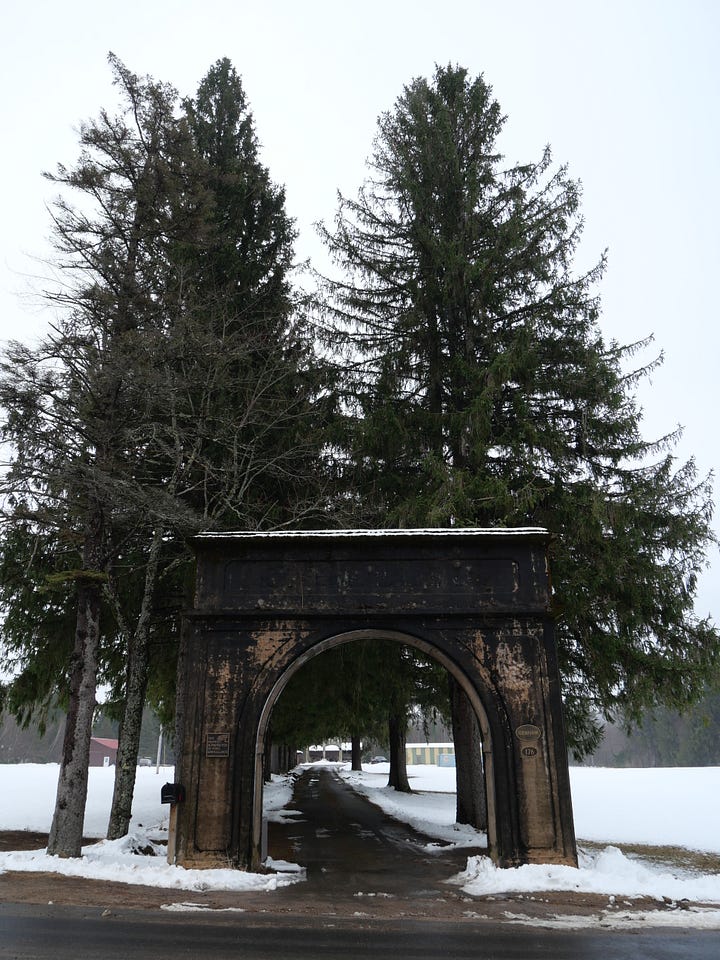

Walking the back streets of the village, it is clear that this year’s recordbreaking winter has wreaked havoc on the structures in the town. While there are over five-hundred residential structures here, only half of them are occupied year-round. Many are camps, trailers, RV’s with protective pavilions built over their roofs, and rough old houses that have become cheap summer homes for an aging class of out-of-state residents. Peeling paint shanties, camps with sagging beams, and this year, trailers with collapsed roofs dot the wooded streets of the hamlet; many are ruined beyond any hope of being saved. Remnants of summertime parties from years’ past are strewn about the yards, too — beer bottles in the muck, tipped-over burn barrels, junk cars, boarded-up sheds full of bedding, fishing reels, inflatable swimming toys; all of them arrayed in a haunting still life of the abandoned summers of so many of yesteryear’s rusticators and roisterers.
Cruising the plat maps of the township, one finds a tremendous amount of real estate owned by the dead: roughly one-in-four properties have dead men listed as their owners. Google their names and find obituaries and unsettled estates galore. Many of the properties are likely unwanted by their inheritors, too; lists of those who survive the departed often include their current place of residence, and Florida, Carolina, Arizona, Texas, and other Sun Belt states predominate. Often, the taxes are unpaid, and the Town Board has been forced to raise the property tax cap. The Supervisor says a re-valuation of property is going to be necessary; meaning taxes will keep rising for the ones who stay here. One wonders if this trend could continue forever — if eventually, the hangers-on in a place like this will be forced to collectively finance a town budget formerly paid by more than twice the taxpaying residents.
More likely: Services will be cut. The town parks are already full of stone firepits that are doddering heaps of rock and crumbling mortar, all moss-covered and overgrown. Flood-damaged footbridges don’t get rebuilt. The little sewage system the town runs is in desperate need of updates; there has even been talk, here as with elsewhere in rural America’s crumbling hinterlands, of de-paving town-owned roads to save on highway department expenses.
Meanwhile, the process by which tax-delinquent real estate is ever sold off takes so long that, at the tax auctions, it seems one can only ever purchase half-rotted buildings. Had they been sold sooner, they might’ve been able to be saved; instead, they are usually purchased by faraway investors who only let them rot further. You see their names on the town’s tax rolls and instantly know the nature of their dealings — Bangladeshi immigrants with Queens addresses, firefighters from New Jersey, holding companies run by contractors from out-of-state. One wonders if, from afar, the properties appeared to be worthwhile investments owing to their startlingly low price. But, doubtless, should these new owners ever actually visit the properties, they will be in for a sobering moment.



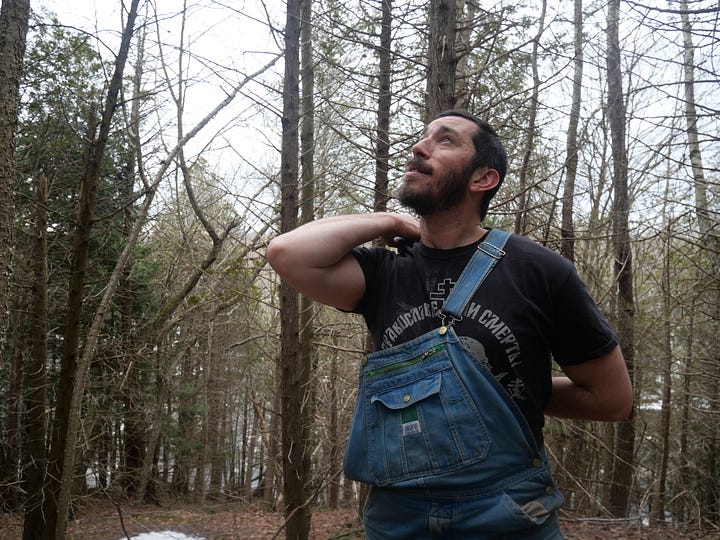
I am not really complaining, not at all. Rural America’s levels of decay run on a spectrum, I think, and it only makes any sense to bemoan the decline during the first few levels. After these, a kind of ‘fulcrum point’ has been quietly attained — and a town or region has descended to such a radically feral state that decline is a foregone conclusion. Perhaps in this respect, a town is a lot like a hayfield — if it goes unmowed for a season, it can be mowed back to productivity. If it goes unmowed for a few seasons, it might be able to be, with considerable effort, ‘brush-hogged’ back into workable land. If it goes unmowed for decades, it is now a forest, and memories of arable land cease to be relevant. The occupants of such parcels tend to learn to use and enjoy the woods rather than pining for the long-gone days of lush pasture — sometimes, they may even come to prefer forests to hayfields.
And anyway, what we have here is, in historical terms, a “power vacuum.” The early days of logging and marginal farming in this region built a certain sort of town and raised a handful of families up into a position of strong influence. Early ‘fathers’ of the village set the tone and the tenor of the place; and its riches, meagre though they were even in the hamlet’s heyday, gave this town some kind of relevance to the wider world. Now, that has eroded entirely, and the unspoken question hanging over this place and others like it is — “what, if anything, will take root here now?” Without jobs, newcomers and immigrants won’t come. Without arable land or a suitable growing climate, the Amish and Mennonites won’t, either. The region’s young people are fleeing in droves, and their parents and grandparents are dying quickly. When they are gone, what will the future be?
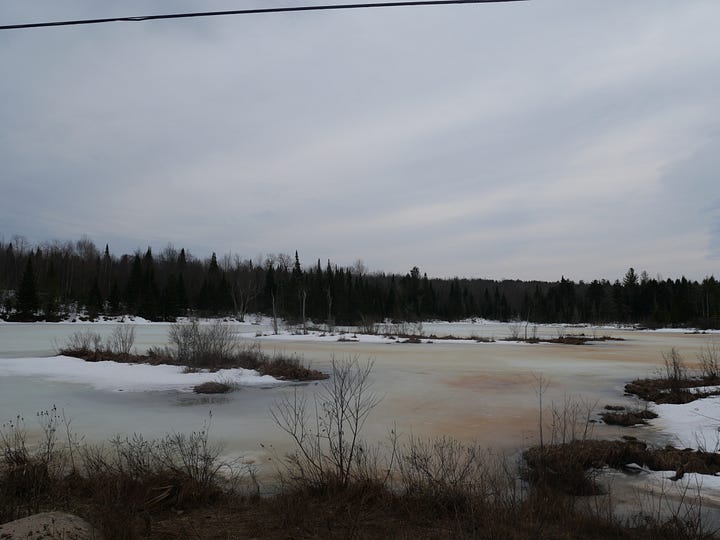
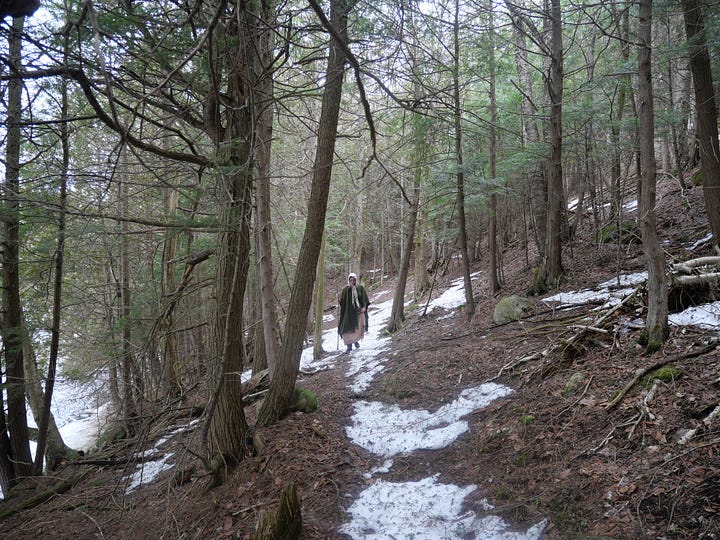
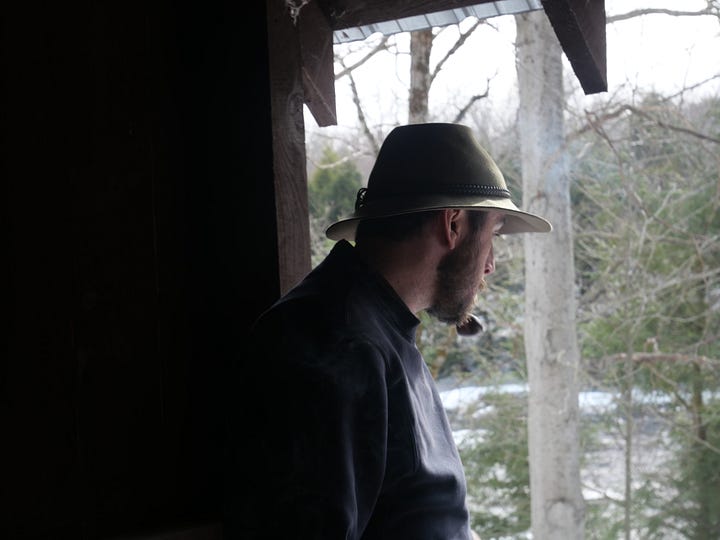
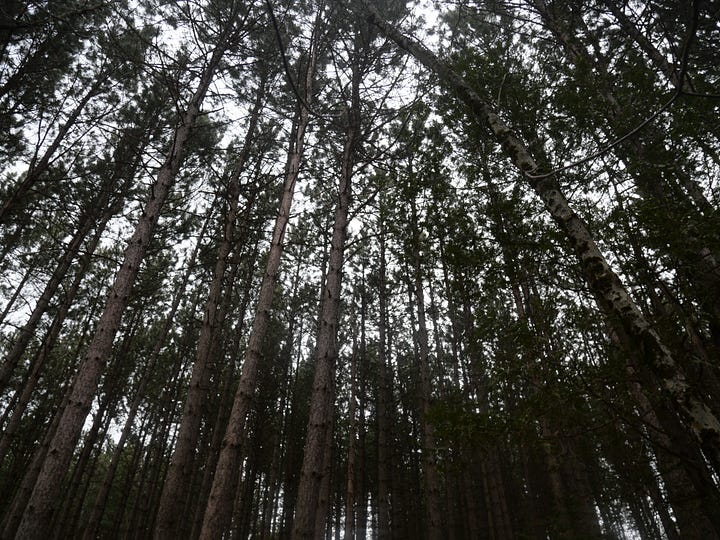
Perhaps, after so many funerals and so many partings, there will be nothing. It is not hard to envision a future where the township is dissolved, the roads are de-paved, the town parks and buildings cave in, and the homes and storefronts are occupied only by rats, pigeons, and whatever ephemera those departing or dying have left behind. The Church (which is already merging with not one but three area Churches) will shut down; the bar will slide into bankruptcy and its owner will abscond to Florida. The store will close, and then, perhaps, it could be leased by a Punjabi family who thought “New York” meant New York City (a sadly common mistake among immigrants). They will realize they’re in over their heads, sink into insolvency, and then it will close again forever.
Of course, the moose will return, too — the otters will come further downriver; bobcats and fishers will hunt squirrels on the overgrown Village Green. The trees that would’ve been cut for firewood will grow into sprawling canopies and primordial behemoths. The few human beings who would remain in such a place would be, for lack of a better word, a little feral: the sorts of men who could not fit into the wide world of work and bills — the types who would rather subsist on beaver meat and blackberries than ever punch a clock. Such men are already here, to be sure, and it is doubtful that their ilk would ever leave. In all these respects, places like these will, as they decline, quite possibly preserve the greatest facets of both the Eastern Wilderness and of original, pre-modern American culture. Perhaps this is the default for such a place as this.
After all, even the Indians didn’t live here. This is the Adirondacks — a name that is an Anglicization of the Haudenosaunee term, ha-de-ron-dah, meaning “eaters of bark.” Legend has it that this region is so termed because any Haudenosaunee or Algonquin foolish enough to attempt overwintering here soon faced starvation, and was forced to stuff his stomach full of the inner bark of pines and spruces to survive. Such people eventually made their way back to the Mohawk and Saint Lawrence Valleys, begging for food, and were laughed at and joked on as “bark eaters.”
Later, the whites who came here usually fared no better:
“When John Brown died in 1803, his development in the “New York Wilderness” fell into disrepair, but several years later his second son-in-law, Charles Frederick Herreshoff, moved to the tract and built Herreshoff Manor […] He offered strong incentives to get settlers to farm the land, but the farms failed. The mountainous terrain was unproductive and the growing season too short. When the farms failed, Herreshoff turned to raising sheep. When the sheep business failed, he turned to iron ore mining. When the mines proved to be unproductive, he gave up. Herreshoff committed suicide in 1819 and soon the land began to fall back to nature.”
Such stories are common in the early histories of the Adirondacks. Years ago, I read an old, gigantic leatherbound history of the Adirondacks that had been published around 1915. It read like an especially long and twisted Cormac McCarthy novel. Suicides, drownings of starving relatives, land scams, murders, fires, ice storms, un-tillable land, low-quality ore, sickly ruminants, alcoholism, snows so deep that the pursuit of game was impossible. It should not be any great wonder that many of the earliest settlers of this wicked place usually left for the West, which, for all the trevails such places might’ve presented — offered a comparatively gentle series of prospects.




In the modern era, it seems, the only measure of subsistence that is possible here is found either in tourism or employment with the government — and in general, the latter is driven by the former. Tourism is simply the economic lifeblood of the Adirondacks; hotels, camps, resorts, taverns, little shopping districts, ski resorts — without these, large segments of the populous here would be forced either into an austere subsistence lifestyle or into moving elsewhere. And without them, government services would shrink and shrink until their eventual shuttering and death; state workers would move off, too. All that would be left would be ruins, memories, and a few tough old woodsmen with the skills and the grit necessary to eke a living out of this harsh, unyielding landscape.
Tourism is, of course, a weird bugaboo unto itself. Most visitors come from afar, and understandably aim to visit the greatest, most dramatic vistas the Adirondack Park has to offer. They want the sweeping, gorgeous, far-reaching views of the High Peaks region around Lake Placid, or the skiing experiences of Gore Mountain, or beach campgrounds on mountain lakes with a perfect horizon of jagged peaks; in places like these, they pack in to enjoy the scenery — and, unwittingly, to cause parking problems, erosion on trails, and gentrification.
They also tend to find the long drive up I-87 to be exhausting — and are not wont to drive an extra hour or two for less-dramatic, less-Instagrammable scenery, even if it is much less crowded. And so it is that the Park’s more obscure regions, like this village and its surroundings, are ignored. Vague, swampy highlands and low, unremarkable mountains — featureless chasms of unpeopled forests and blackfly-choked vlys: such areas as these do not attract tourists in any great number, and probably never will. They are firmly off the tourist circuit, and for it, they are often languishing in deep, generations-long economic decline.
Yet — strangely enough, these are also the areas where some extremely wealthy people have a penchant for purchasing sprawling, isolated estates. Certain billionaires who’ve enjoyed a spot on the list of the world’s hundred wealthiest people are known to abscond to this area occasionally, keeping small, hermetic, vaguely-medieval-style staffs of caretakers on lifelong retainer for their rare visits. The lot lines of such estates often border the property of some of New York’s most destitute citizens; the wealthy magnates themselves may never visit the nearby villages even once. One wonders if, in the event any of these wealthy landowners lose their fortunes, their estates might succumb to abandonment, too — to revert to wilderness again, as so many estates have ever done in this part of the country.
When villages like this one decline, there is often no one — no farmer or miner, no logger or bureaucrat, no working-class tourist, no ritzy ski bunnies or billionaires to stay on or intervene or care. The decay is almost wholly unnoticed and unseen — except by the elders. Once they, too, are gone, such places may only come to constitute a hidden world of un-chronicled dereliction and an exercise in a sweeping and wordless return to nature.
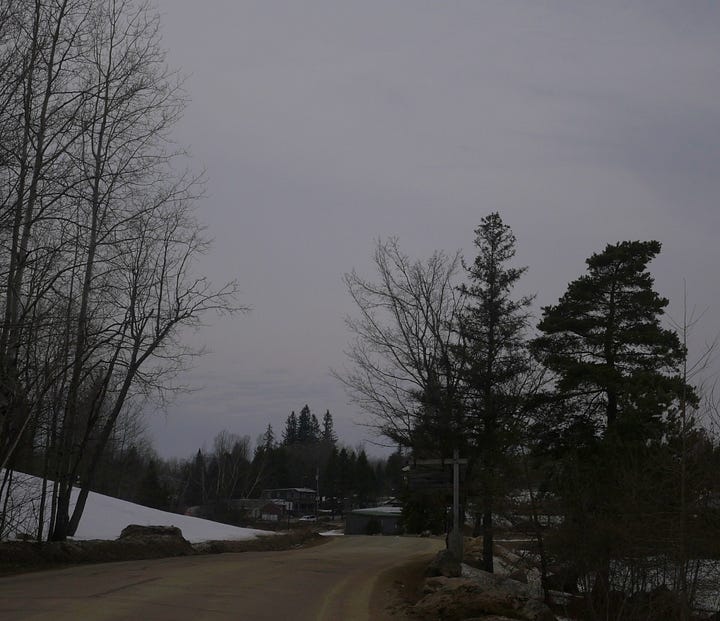

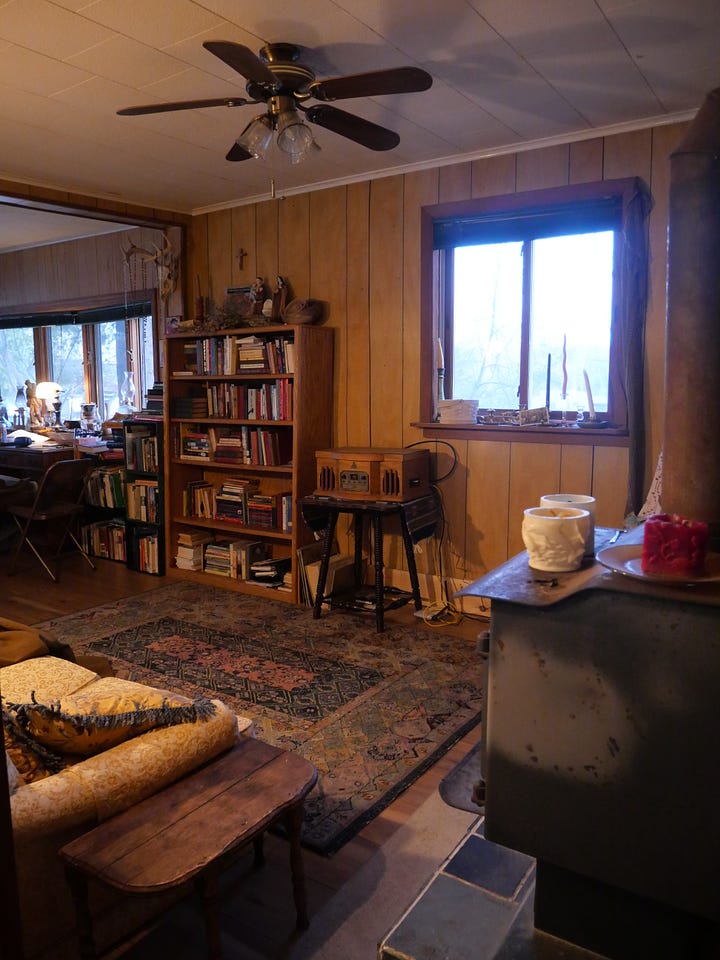

Then again — here I am, chronicling it. More than this, my wife and I have chosen to live here and intend to stay. In writing this, I think of an old legend about the mine down at Tahawus, which was shut down in 1989. It is said that when it closed, the State put one old fellow on payroll to live there, alone, for the purpose of “ensuring that the area decays properly.” I have no idea if this tale could actually be true, but perhaps this is to be my and my family’s lot here in this village. By all the signs I can see — it is very likely to be the default outcome of our life here, and if nothing else, it will be a fascinating thing to witness.
Surprises, of course, can come — especially to places where a ‘power vacuum’ has emerged. No doubt, there are resources here now; there is just enough vitality to altogether constitute an attractive prospect for those young families for whom the idea of a ‘soft exit’ from civilization is attractive. A bar and a Church, a store and a volunteer-run library and a county bus line — tens of thousands of acres of awe-inspiring primeval wilderness literally just outside one’s back door. As of today, there are four houses here now for sale for less than $50,000, and probably many more to follow; all walking-distance from the town’s major amenities. One could subsist here on a combination of exceedingly irregular informal labor, and hunting, fishing, gathering, gardening. One could plan to travel for seasonal work, or, if they are creatively-minded, they could try to use the internet to derive a small income by selling handmade items, mailed wild crafted herbs, or things like art, music, and writing. From where I sit, it seems as if it’d be a fine life!
Of course, I must say here that I am only living as I am now because of those of you who are paid subscribers to Hickman’s Hinterlands. I spend basically all of the money you pay me at the local businesses here, and so in that respect, your subscription monies are a direct contribution to this town’s continued existence. And what excess I can save will go toward buying an abandoned storefront here and using it as a brick-and-mortar clubhouse for paying Hinterlands readers. It is also my intention to turn my back barn into a hostel and a gathering-place — so that we can regularly host events here for all of you, and can take in travelers as they come.
My gratitude for your patronage is, on these points, nothing short of immeasurable: not only am I writing for a living, but I am now poised to support our first child (who is due in July) here. And quite possibly, by way of your faith in me and your financial support for these ambitions, I could be able to spur some kind of a tiny Rennaisance for this town — a mild wisp of hope in the faintly beating heart of Obituaryland.
To close I’ll only remark on how completely strange it is that a place like this would die. We are in some of the most pristine wilderness on earth here, and there are times where, haggard though this hamlet may be, it contains all of the charms of a storybook village. True enough, there are no jobs here — but for how absurdly cheap the living is in this town, one only seems to need a quarter of one whole job to subsist. Verily, one could not build a house for what they are charging for them here… More than this, it is not as if commerce could not be conducted here. The internet is here; USPS is operable — and though we are far off the tourism circuit, and lacking in the kind of dramatic scenery that could ever draw that sort of interest, perhaps other possibilities for bringing in visitors could exist. Perhaps it could become a place to engage in a bit of ‘time travel,’ to sample the Empire State’s deepest hinterlands — a place for early retirement, for Catholic revivals, for cheap retreats for writers and thinkers and eccentrics of all stripes. And on these latter possibilities, if they could occur, they might take place right here on my porch — by the good graces of paid subscribers to Hickman’s Hinterlands.
Whether we are here to observe the decay, or whether we are here to breathe a little hope into this village, I do not know. We are new here, though I have been coming here for years; we know that matters like these are, at least in part, matters of Providence. Whatever the shape of our lives in this place may ultimately be — I am beyond grateful to be here, away from the monoculture, away from the cacophonies that are now blaring throughout America’s “Main Streets”. With a little gumption, it seems readily plausible that places like these may be the most apt locales in which to foment a revival of old-school Americanism; or to preserve the old ways of earlier times. To live among the principalities and powers that the wilderness breathes upon men and their efforts — to stand aright before holy God at the bleeding edge of the civilized world. I can think of nowhere better, dying though the place may be; perhaps we are buzzards and vultures — creatures taken with the sumptuous feasts of the carrion and corpses; scavengers who cling onto older bones and former times. If that is what we are, my friends, I say with a smile that indeed, we have found the right place.
NOTE:
While I cannot name which village this is (as I find it unwise to name it publicly online, for security reasons), I welcome paid subscribers to reach out if ever they are in the Northern Adirondacks — we would be thrilled to entertain you whenever you are in the area. Please stand by for updates about a potential paid-subscriber get-together here, too. While we’d planned to host this in June, because of my wife’s due date, we are now thinking about doing it in September. Those who come will, God-willing, be able to say hello to our baby — who, by all I know, is liable to be the first one born in this village in a very long time. Thank you, and God bless.




I have never been to the hinterlands of the Northeast. I was born in Las Vegas, New Mexico, and as your excellent article about Northeastern New Mexico pointed out, there is something special about being one of the few. I grew up on a ranch in Montana where our closest neighbor was 12 miles away, and our parents would leave for a week, and at ten and seven my brother and I would milk the cow and do chores and twice a day. Oh, and be ready for the school bus at 7:30. There is just something about places like that. Kids thrive, and self reliance is just expected. You are blessing your child with living where you are. I look forward to looking you up, if I can. If you head to Montana and want some beta, I would love to head you in the right direction.
Simply offering up and most sincere "Amen" to this. For a whole host of reasons.